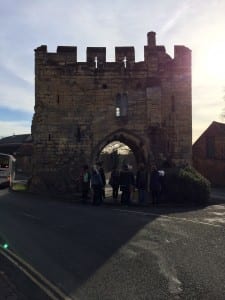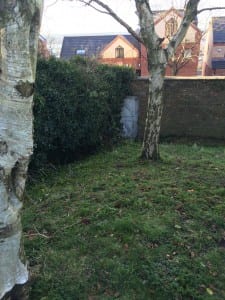Pearson[i] describes calling site specific performance ‘that undertaken in non-theatrical spaces’ as ‘barely adequate’ (Pearson, 2010, p.66) and after my first week studying this module I have already realised just how accurate this description is. This week’s introductory workshops have demonstrated to us the vast amount of possibilities and complexities the experimentation with ‘site’ provides.
After practising Duncan Speakman’s ‘subtle mob’ outside the LPAC and watching a clip on his sound-walk piece “As If It Were The Last Time” I did some further research into the development and planning of this moving piece and learnt about the possible positive effects site specific performance can have upon participants and passers-by – with one Londoner saying how it had made them feel like they were in ‘a movie’. This research has also made me consider the possibilities of using audio in our own performances.
Furthermore, I also looked into the reading ‘Theatre and Architecture’[ii] that highlights how the relationship between architecture and theatre is often overlooked but for French Theatre Director Jacques Copeau ‘architecture is the most fundamental aspect of theatre’ (Harvie and Rebellato, 2015, p.2). As most of our possible sites are located close to many grand pieces of architecture e.g. The Cathedral, The Castle, The Gates etc I felt that this is a relationship that should be considered as we have the opportunity to incorporate these architectural pieces into our own performances; perhaps being influenced by their historical context, using them for aesthetic inspiration or for creating atmosphere. The extract also explains how we should consider that the site’s architecture may ‘establish a certain social code’ (ibid. p.5) and when staging a site specific performance it is also ‘about acting in architecture… it demands we pay attention to distance, scale, style… light, heat and sound’.(ibid. p.3/4)
Finally, after Wednesday’s workshop I was eager to look into more of Christo and Jeanne –Claude’s work and found this piece which I found particularly astonishing and worth sharing.
‘Wrapped Coast’
Christo and Jeanne-Claude
One Million Square Feet, Little Bay, Sydney, Australia
1968-69



[i] Pearson, M, Site Specific Performance (Basingtone: Palgrave Macmillan, 2010)
[ii] Jen Harvie and Dan Rebellato, Theatre and Architecture, (London: Palgrave Macmillan, 2015)










